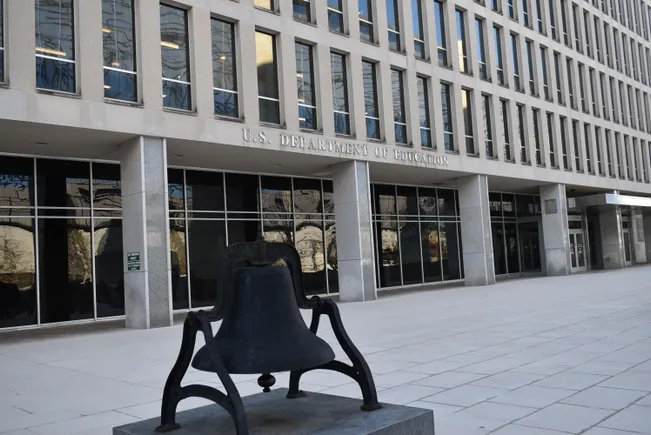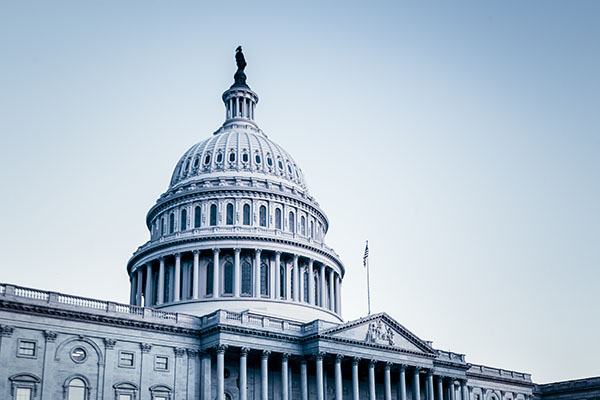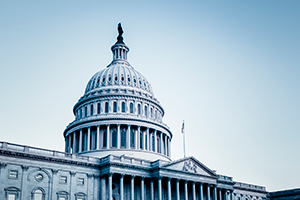The problem with findings like “1.5 per cent of students said they were in intimate relationships with staff” is the danger of extrapolation.
It’s in the results of the Office for Students (OfS) first sector-wide sexual misconduct survey – covering final year undergraduates in England who chose to take part in a clearly labelled bolt-on to the National Student Survey (NSS) earlier this year, with a response rate of just 12.1 per cent.
But 1.5 per cent of final-year undergraduates at English providers reporting “intimate” staff-student relationships in the past 12 months still feels like a lot – especially when half involved staff members who were engaged in the student’s education and/or assessment.
One in four respondents (24.5 per cent) said they’ve experienced sexual harassment since starting university, and 14.1 per cent declare experiencing sexual assault or violence.
Most incidents involved fellow students – with 58.4 per cent of harassment cases and 44.1 per cent of assault cases (taking place off-campus) involving someone connected to the victim’s institution.
OfS has published a dashboard of the results, an analysis report, a guide for students and a press release where the bullets slightly are less careful about extrapolation than I’ve been above. Another report to come later will provide more detailed analysis, including results for different combinations of characteristics and findings by academic subject.
The exercise represents OfS’ first real attempt to gather national prevalence data on sexual misconduct affecting students, having initially promised to do so back in 2022 in the context of its new Condition E6. That requires providers to take “multiple steps which could make a significant and credible difference in protecting students”.
The survey covered three main areas – sexual harassment experiences, sexual assault and violence, and intimate staff-student relationships. Questions also included detailed behavioural descriptions to ensure accurate prevalence measurement.
As such, the approach built on a 2023 pilot study involving volunteer providers. Since then, OfS has shortened the questionnaire whilst maintaining its core elements, leveraging NSS infrastructure to achieve national scale coverage – although for now, none of the devolved nations have taken part.
It’s worth noting that response patterns showed quite a bit of variation between demographic groups. Students with disabilities, female students, and LGB+ students were both more likely to respond and more likely to report misconduct – creating some quite complex interpretation challenges for understanding true prevalence rates.
Prevalence patterns and vulnerable groups
That set aside, the results show consistent vulnerability patterns across both harassment and assault. Female student respondents reported harassment rates of 33 per cent compared to significantly lower rates among males. Student respondents with disabilities experienced harassment at 34.7 per cent and assault at 22.1 per cent – higher than those without disabilities.
Sexual orientation showed significant differences. Lesbian, gay and bisexual respondents reported harassment rates of 46.6 per cent and assault rates of 29.8 per cent, nearly double the overall population rates. Those identifying as having “other sexual orientation” also showed elevated rates – at 40.1 per cent for harassment and 23.3 per cent for assault.
Age was also a key factor, with those under 21 at course start showing higher vulnerability rates – 31.2 per cent experienced harassment and 18.2 per cent experienced assault.
In terms of behaviours, the survey found “making sexually suggestive looks or staring at your body” affected 16.7 per cent of all respondents – the most common individual harassment behaviour. This was followed by “making unwelcome sexual comments or asking sexualised questions about your private life, body, or physical appearance.”
The patterns have direct relevance for E6’s training requirements, which mandate that induction sessions ensure students “understand behaviour that may constitute harassment and/or sexual misconduct.” The prevalence of apparently “lower-level” behaviours like staring suggests providers need to address misconceptions about what constitutes harassment – particularly given the survey’s use of legal definitions from the Equality Act 2010 and Protection from Harassment Act 1997.
There were also interesting patterns across socioeconomic and ethnic lines that deserve interrogation. Those from the least deprived areas (IMD quintile 5) reported higher harassment rates at 32.6 per cent, but so did those not eligible for free school meals, who showed elevated rates at 32.9 per cent. And mixed ethnicity respondents reported harassment at 31.5 per cent compared to 27.9 per cent among white students.
Where groups showed higher misconduct rates, part of the problem is that we can’t be sure whether that reflects reporting confidence, different social environments, or varying exposure patterns – all things providers will need to understand to make progress on the “credible difference” thing.
The ethnic dimension also intersects with religious identity, with Jewish respendents (29.8 per cent), those with no religion (30.5 per cent), and those from “any other religion” (35.5 per cent) showing elevated harassment rates. Again, differential intersectional patterns should align with E6’s requirements for providers to understand their specific student populations and tailor interventions accordingly.
The reporting crisis
One of the survey’s most concerning findings relates to formal reporting rates. Only 13.2 per cent of respondents experiencing harassment in the past year made formal reports to their institutions. For sexual assault (in a university setting or involving someone connected to the university) reporting varied dramatically by age – just 12.7 per cent of under-21s reported incidents compared to 86.4 per cent of those aged 31 and above.
This reporting gap in turn creates a fundamental information deficit for universities attempting to understand campus culture and develop appropriate interventions. The data suggests institutions may be operating with incomplete intel – hampering attempts to comply with E6 requirements to understand student populations and implement effective protective measures.
E6 explicitly requires providers to offer “a range of different mechanisms” for making reports, including online and in-person options, and to “remove any unnecessary actual or perceived barriers” that might make students less likely to report. The survey’s findings suggest the mechanisms may not be reaching their intended audiences, particularly younger students.
Among those who did report, experiences were mixed. For harassment cases, 46.7 per cent rated their reporting experience as good whilst 39.3 per cent rated it as poor. Sexual assault reporting showed slightly better outcomes, with 57.3 per cent rating experiences as good and 32.4 per cent as poor. These are findings that directly relate to E6’s requirements – and suggest the sector has some way to go to build confidence in the processes it does have.
The condition mandates that providers ensure “investigatory and disciplinary processes are free from any reasonable perception of bias” and that affected parties receive “sufficient information to understand the provider’s decisions and the reasons for them.” The proportion rating experiences as poor does suggest that some providers are struggling to meet E6’s procedural fairness requirements.
University connections and scope of misconduct
Jurisdiction has always been a contested issue in some policies – here, misconduct frequently involved university-connected individuals even when incidents occurred off-campus. Among harassment cases not occurring in university settings, 58.4 per cent involved someone connected to the victim’s university. For assault cases, that figure was 44.1 per cent.
Student perpetrators dominated both categories. Staff perpetrators appeared less frequently overall, though older students were more likely than younger groups to report staff involvement in assault cases.
In E6 terms, the condition explicitly covers “the conduct of staff towards students, and/or the conduct of students towards students” and applies to misconduct “provided in any manner or form by, or on behalf of, a provider.” The data suggests universities’ efforts will need to explicitly extend beyond physical premises to encompass behaviour involving community members regardless of location.
In fact, most recent harassment incidents occurred either entirely outside university settings (39.7 per cent) or across mixed locations (45.1 per cent), with only 15.2 per cent occurring exclusively in university settings. For sexual assault, 61.9 per cent occurred outside university settings entirely.
The patterns all point to providers needing sophisticated approaches to addressing misconduct that span campus boundaries. Traditional safety measures, or at least student perceptions of jurisdiction, might well miss the majority of incidents affecting students – broader community engagement and partnership approaches will need to be deployed.
Support confidence
The survey also examined’ confidence in seeking institutional support – finding 67.5 per cent felt confident about where to seek help, whilst 29.3 per cent lacked confidence. But confidence levels varied significantly across demographic groups, with particular variations by sexual orientation, sex, disability status, and age.
The differential confidence patterns also justify the E6 requirement for providers to ensure “appropriate support” is available and targeted at different student needs. It specifically requires support for students “with different needs, including those with needs affected by a student’s protected characteristics.”
The age-related reporting gap suggests younger students may face particular barriers to accessing institutional processes. This could relate to unfamiliarity with university systems, power dynamics, or different attitudes toward formal complaint mechanisms. For sexual assault cases, the contrast between 12.7 per cent reporting among under-21s versus 86.4 per cent among over-31s represents one of the survey’s most striking findings.
The age-related patterns have specific relevance given E6’s training and awareness requirements. The condition requires providers to ensure students are “appropriately informed to ensure understanding” of policies and behaviour constituting misconduct. The survey suggests the requirement may need particular attention for younger students – they’re showing both higher vulnerability and lower reporting rates.
Staff-student relationships
The survey’s staff-student relationship findings are a small proportion of the student population – but they do raise real questions about power dynamics and institutional governance.
Among the 1.5 per cent reporting those relationships, the high proportion involving educational or professional responsibilities suggest significant potential conflicts of interest.
Respondent students without disabilities were more likely to report relationships involving educational responsibility (72.6 per cent versus 45.5 per cent for disabled students), and similar patterns emerged for professional responsibilities. The differences deserve investigation, particularly given disabled students’ higher overall misconduct rates.
E6’s requirements on intimate personal relationships require that providers implement measures making “a significant and credible difference in protecting students from any actual or potential conflict of interest and/or abuse of power.”
The survey’s power dynamic findings suggest the requirement is needed – although whether the most common approach that has emerged (a ban where there’s a supervisory relationship, and a register where there isn’t) creates the right “culture” is a remaining question, given students’ views in general on professional boundaries.
Regulatory implications
The survey’s findings raise real questions about how OfS will use prevalence data in its regulatory approach. Back in 2022, Susan Lapworth told the House of Commons Women and Equalities Committee hearing that the data would enable the targeting of interventions:
“So a university with high prevalence and low reporting would perhaps raise concerns for us – and we would want to then understand in detail what was going on there and that would allow us to focus our effort.
Of course, as with Access and Participation, having national data on “which kinds of students in which contexts are affected by this” could well mean that what shows up in provider data as a very small problem could add up to a lot across the country. OfS’ levers in these contexts are always limited.
The lack of survey coverage of postgraduate students in general turns up here as a major problem. We might theorise that most exhibit multiple theoretical vulnerabilities given the dominance of international students and students who have supervisors – patience with OfS’ focus on undergraduates really is wearing thin each time it manifests.
The report also doesn’t look at home vs international student status, and nor does it disaggregate results by provider mission group, size, type, or characteristics. It only states that all eligible English providers in NSS 2025 were included, and that data are weighted to be representative of final-year undergraduates across the sector. Providers are also (confidentially) receiving their data – although response rates down at provider level may make drawing conclusions in the way originally envisaged difficult.
The dramatic under-reporting rates create monitoring challenges for both institutions and OfS. If only 13.2 per cent of harassment victims make formal reports, institutional complaint statistics provide limited insight into actual campus culture. The information gap complicates E6 compliance assessment – and suggests OfS may need alternative monitoring approaches beyond traditional complaint metrics.
E6 does explicitly contemplate requiring providers to “conduct a prevalence survey of its whole student population to the OfS’s specification” where there are compliance concerns. The 2025 survey’s methodology and findings provide a template, but it also seems to me that more contextual research – like that found in Anna Bull’s research from a couple of years back – is desperately needed to understand what’s going on beneath many of the numbers.
Overall though, I’m often struck by the extent to which providers argue that things like E6 are an over-reach or an example of “burden”. On this evidence, even with all the caveats, it’s nothing like the burden being carried by victims of sexual misconduct.








